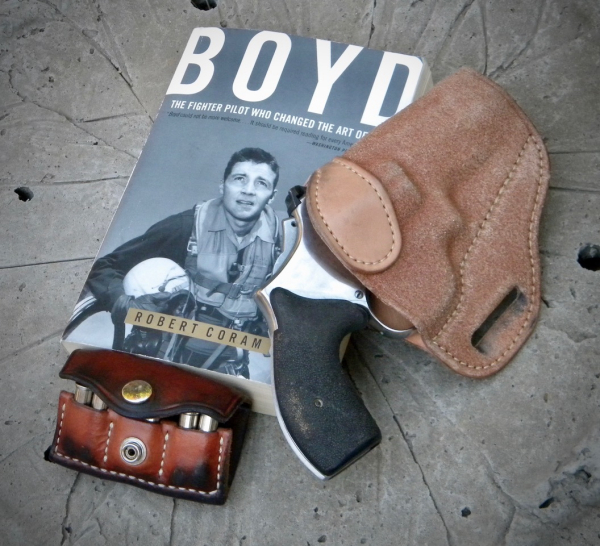
I finished up reading “Boyd: The Fighter Pilot Who Changed The Art Of War,” by Robert Coram – which I highly recommend. According to Coram, and a host of others, Boyd is the Sun Tzu of modern times. You’ll be amazed to learn of Boyd’s many accomplishments. I knew of “Boyd’s Loop,” or the O.O.D.A. loop. Most of you should be familiar with this concept too; if not start researching now.
While most are acquainted with Boyd’s Loop, few really understand it. In addition to “The Art of War” (Von Clausewitz) and other classics, Boyd studied battles where smaller forces were able to defeat much larger and better equipped opponents. Deception and speed combined with agility and identifying the enemies’ weaknesses were the keys to forcing your opponent, as Boyd said, “to unravel before the fight.”
If you just look at the Loop as a one directional sequence you don’t get the full meaning of it. First, you’re constantly cycling through it over and over until the conflict is over. Secondly, based on the original concept, it’s not even a loop. From the way everything intersects there’s hundreds of possible loops. Agility and flexibility are built into the loop.
Speed comes from understanding the situation. Your skills, the opponent’s capability, the environment and every other important factor. You have to Observe, then almost jump past Orient and Decide into Act. All to choose the least expected option – confusing the opponent – that is the most efficient action – attacking their weakest point. Here’s a simplistic example: Danger – Move! A threat appears, and your immediate response is to move, which is not what they were expecting. This initial action must be followed up by another, again to stay inside or ahead of the threat’s loop – this is mandatory.
An important part of Boyd’s Loop is that once you start you cannot stop or slow down. “It must continue and it must accelerate.” (Boyd pg. 338.). Success, becoming surprised by the effectiveness of your first action, is the biggest danger. Remember the doctrine of “Good Surprise.” Which means you’re always ready to follow up with another immediate action, and constantly pressing the advantage. Eventually your loop gets so far ahead of the threat’s that victory is guaranteed.
When it comes to self-defense with firearms most everyone gets caught up in “fast.” They want to draw fast, load fast and shoot fast. The thing is most all of our gun skills are fast enough. Yes, in a defensive situation speed is a factor. But not speed in the way most people think about, as in how quick you can draw and fire a shot. Winning is about when you determine to move, how quick you determine the situation calls for you to draw and then if necessary fire. Winning is about decision making, and then trusting your decisions and skills. One should study this well.
Tiger McKee is director of Shootrite Firearms Academy, which is celebrating its twenty-fifth anniversary. He is the author of The Book of Two Guns, AR-15 Skills and Drills, has a regular column in American Handgunner and makes some cool knives and custom revolvers. Visit Shootrite’s Facebook page for other details.